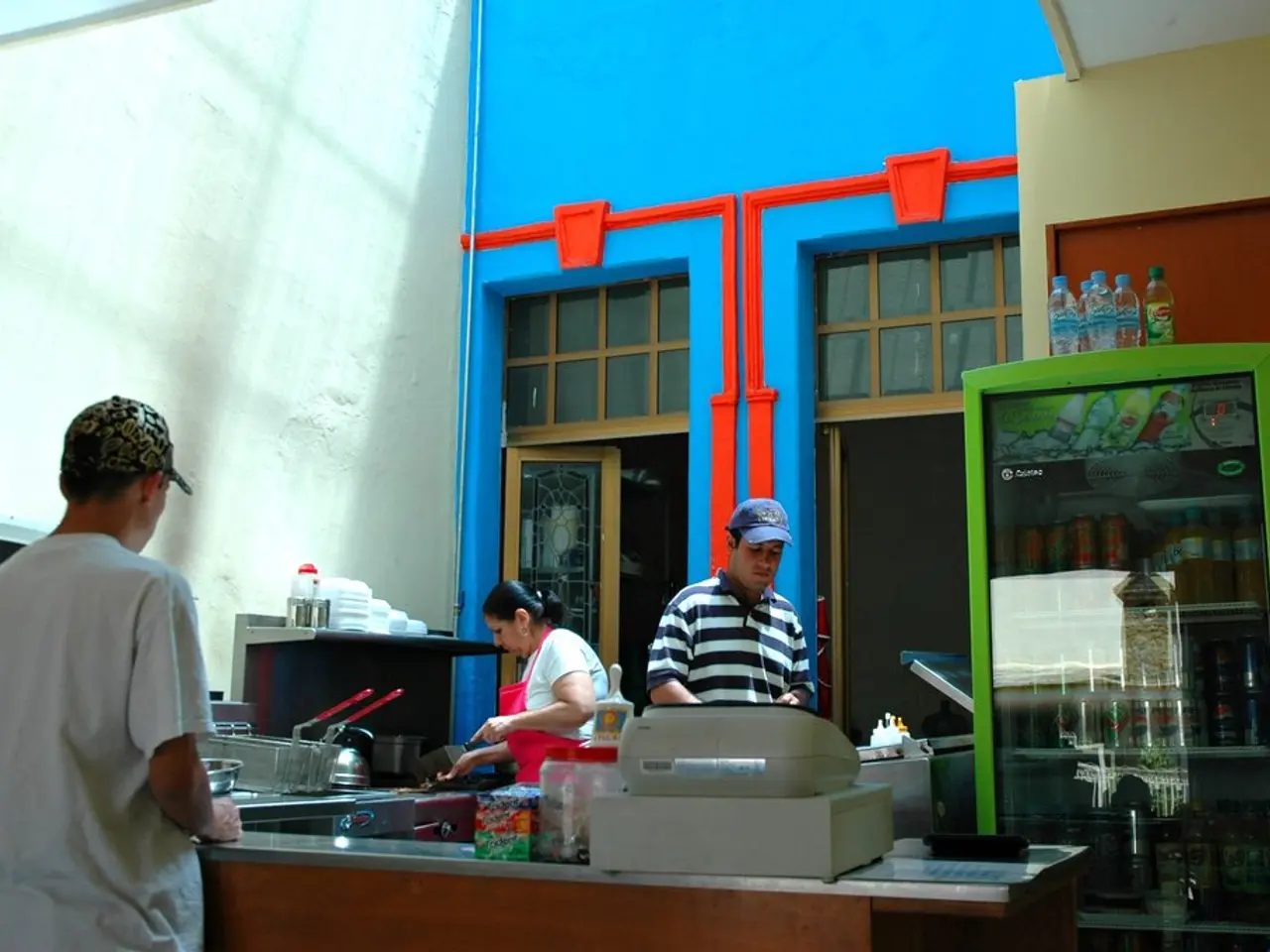'Overwhelming Heat Inside': Saudi Arabian Chefs and Bakers Struggle Amidst Sweltering Indoor Conditions
In the blistering heat of Saudi Arabia, where temperatures regularly soar to 50°C, working indoors can be just as challenging as toiling under the sun. This is the reality faced by many workers, including Ahmed, a 35-year-old Egyptian who earns his living at a bakery in Riyadh.
Ahmed works from 11:00 am to midnight, but fatigue sets in early, especially by midday. He toils in a cramped kitchen packed with a grill, a charcoal stove, and large pots filled with steaming rice. The heat is unbearable, even with ten air conditioners running. Despite wearing a mask and hair cap, Ahmed suffers from the heat both near the oven and from the hot air coming in from outside due to a poorly shutting door.
"The kitchen is like hell," Ahmed describes, echoing the sentiments of many workers in indoor settings such as bakeries, restaurants, and laundries. These workers are exposed to health risks due to prolonged exposure to heat, according to experts. Heat exhaustion and excessive sweating can lead to severe dehydration, which puts pressure on vital organs.
To combat these challenges, Saudi Arabia has implemented protection measures for indoor workers during hot summer months. These measures include mandated rest breaks, shaded and ventilated rest areas, hydration protocols, medical check-ups, and worker education on heat stress symptoms and emergency responses. These are supported by government campaigns and occupational safety guidelines aligned with the country’s Vision 2030 goals to enhance worker health and safety.
Employers are urged to provide annual training, adequate cold drinking water, and conduct risk assessments in collaboration with employees, targeting sectors with high heat exposure. However, the effectiveness of these measures depends on employer compliance and the degree of worker education.
Despite these efforts, rising temperatures and record-breaking heat waves increase risks. Expert advice highlights the importance of combining traditional measures with emerging technologies (e.g., AI-driven hazard detection, wearable heat monitors) for enhanced protection.
Work outside is banned during the hours of most intense heat from mid-June until mid-September due to the high temperatures. Yet, for workers like Ahmed, the heat inside the bakery is a constant battle. Some customers have begun complaining about slightly delayed orders due to the heat in the kitchen.
International organisations like Human Rights Watch have called for Gulf countries to extend protections for workers toiling in the heat, considering current measures as insufficient. As the summer heat continues to rise, the need for improved workplace heat stress protection becomes increasingly critical.
- To alleviate the strain on Ahmed's mental health, it is crucial for employers to prioritize workplace wellness and provide a healthier work environment, considering the mental toll of working in such extreme heat.
- The implementation of advanced health-and-wellness strategies, such as incorporating fitness-and-exercise routines and maintaining proper ventilation in the workspace, could significantly improve the overall health of workers during the hot summer months.
- In addition to government initiatives, global human rights groups advocate for better leadership in ensuring the protection of human rights related to health and wellness, particularly for workers exposed to extreme temperatures.




